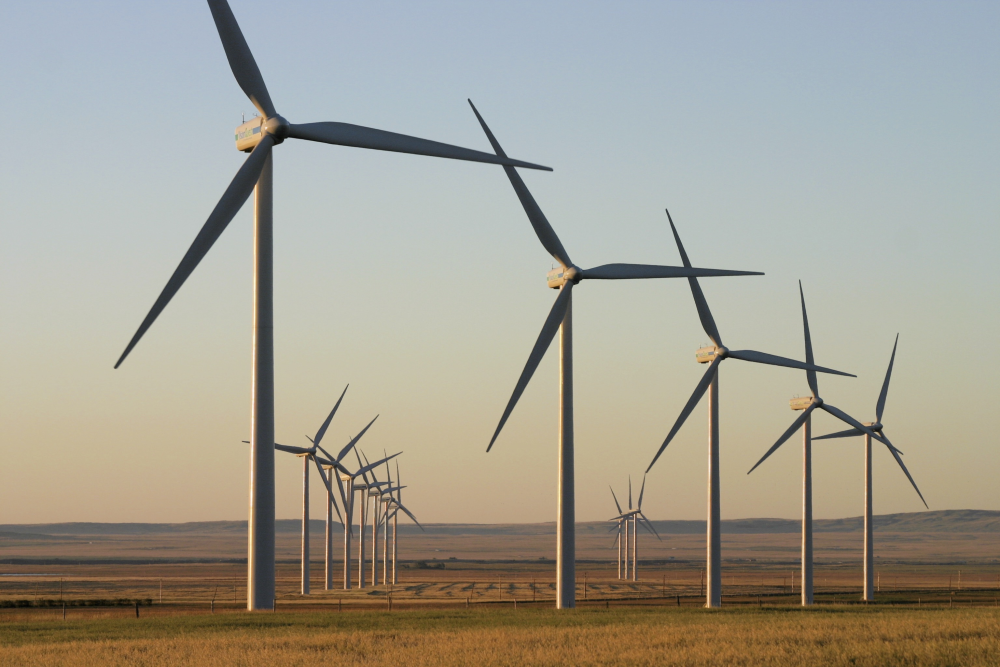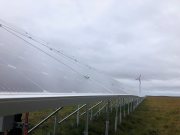It seems to happen with every new technology. It wasn’t so long ago that some people were convinced a photograph could steal your soul. We may read about that now and have a little chuckle, but are we so far removed from the same phenomenon today?
They may start out as a question, worry, anxiety, or even a lie. But let’s call them what they have become: myths. They are partial truths or outright untruths that thrive and multiply in our online world.
Wind turbines and human health

Wind turbines have been blamed for all sorts of health problems, ranging from sleep deprivation to cancer and yes, even death. One person, Dr. Nina Pierpont, even went so far as to coin a term for these diverse effects, “Wind Turbine Syndrome.”
“It's certainly true that you can look at the Internet and find stories about wind turbines causing miscarriages, cancer, all sorts of different things,” says Robert Hornung, of the Canadian Wind Energy Association (CANWEA). “But the science is quite clear on this. Wind turbines can cause annoyance, and that annoyance can be related to many different things…but in terms of having any sort of direct impact on human health, the literature is quite conclusive: Wind turbines do not have such an impact.”
Health Canada conducted a study into the phenomenon in 2013. Their findings mirror Hornung’s claims that wind turbines have no direct effect on human health. Another study from the Massachusetts Department of Environmental Protection found the “annoyance” related to wind turbines is a response that varies based on a subject’s attitude towards the wind turbine itself. Unsurprisingly, the less someone approved of a wind turbine, the more annoyed they felt at its presence.
Simon Chapman, a professor at the University of Sydney, notes that incidences of “Wind Turbine Syndrome” are almost exclusively prevalent in areas where local media have reported on “Wind Turbine Syndrome.” So if you feel a little queasy later today, blame us, not your local wind turbine.
Embodied or life cycle energy
Perhaps you have an armchair economist in your family who, unprompted, loves to drop this little giblet at Thanksgiving dinner: “It takes more energy to manufacture and install a wind turbine than it will produce over its lifetime.”
“That's simply false,” says Hornung. “There have been many studies that have looked at the life cycle of wind turbines. All of the energy used to produce the raw materials…is offset by the energy produced by the turbine within a span of 12 to 18 months. Since wind turbines have a life span of 20 to 25 years, you're getting a very large net positive benefit in terms of the energy being produced.”
The energy used to construct and install a turbine is called the embodied energy. Life cycle energy refers to the energy used to manufacture, install, operate and decommission the project.
Many studies put this number at about one year for so-called energy payback on wind projects. And it just so happens to take 3.67 years to recover the energy that goes into building a coal plant.
So yes it takes energy to build any power plant, but wind stacks up pretty well.
Turbine avian genocide
 Hands up if you’ve heard this one: “Wind turbines are giant egg beaters for birds! It’s like having a blender in the sky!”
Hands up if you’ve heard this one: “Wind turbines are giant egg beaters for birds! It’s like having a blender in the sky!”
Hornung acknowledges that all energy production causes wildlife disruption and it’s “important for the wind energy industry to do all it can to mitigate those impacts.” However, while this isn’t so much a myth, it is a half-truth that needs some context.
“Study after study has shown that wind turbines represent a minuscule contributor to bird deaths,” says Hornung. “Much more significant contributors are skyscrapers, transmission lines, automobiles, and house cats.”
In fact cats, windows and powerlines kill hundreds of millions of birds while wind turbines kill tens of thousands of birds annually.
According to one study “wind farms killed approximately seven thousand birds in the United States in 2006, but nuclear plants killed about 327,000 and fossil-fueled power plants [killed] 14.5 million.”
The New York State Energy Research and Development authority found wind has the second lowest overall impact on wildlife of all the methods of generating electricity.
In recent years bat researchers have found problems with bat mortality, and more research and work is needed to reduce these impacts. There are many good resources on wildlife impacts.
A few more common questions
What happens when the wind doesn’t blow? – Wind turbines produce electricity about 80 per cent of the time, but at varying levels, says Hornung. This is why wind is partnered with other sources of electricity such as hydro, natural gas, biomass or biogas.
Do you need backup for wind? – The electricity system already needs to have enough backup to deal with shutdowns of giant coal, natural gas or nuclear plants and this redundancy can easily accommodate fairly significant amounts of solar and wind generation. Many sources suggest you don’t need specific backup until wind is producing 20 per cent of your electricity.
Is wind power expensive? – Wind power is selling for 5 cents U.S. per kWh in the U.S. In Alberta the grid operator paid an average of 5.5 cents/kWh for wind in 2013, the cheapest form of electricity. This combined with fair carbon pricing makes wind look very good.
Are wind turbines noisy? – The simple answer is wind turbines are not very noisy and that people are exposed to much more noise of all frequencies simply by going outside in the city or country. There is plenty of information available about noise and infrasound. One CBC report concluded wind turbines can be associated with only one adverse affect: chronic annoyance.
Do wind turbines affect property values? – Studies have looked at tens of thousands of property sales and the end have determined wind turbines don’t have a significant impact one way or the other.
The more you know…
People fear what they don’t understand and fear is a breeding ground for myths. Hornung says support for wind projects almost always increases after construction once people have first-hand experience with wind farms.
None of this should keep people from pushing for higher standards, more community engagement and reduced impacts, but if there is a lesson in all this, it’s to be very careful with online claims based on anecdotal evidence.
All forms of energy generation have impacts, but wind has among the lowest overall impact on the environmental and humanity.










